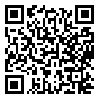Volume 22, Issue 1 (2025)
ioh 2025, 22(1): 0-0 |
Back to browse issues page
Ethics code: IR.JUMS.REC.1400.100
Download citation:
BibTeX | RIS | EndNote | Medlars | ProCite | Reference Manager | RefWorks
Send citation to:



BibTeX | RIS | EndNote | Medlars | ProCite | Reference Manager | RefWorks
Send citation to:
tavakol N, hojat M, tavakol M. Investigating the effect of interventions based on participatory action research on reducing hospital staff burnout during COVID-19. ioh 2025; 22 (1) : 21
URL: http://ioh.iums.ac.ir/article-1-3719-en.html
URL: http://ioh.iums.ac.ir/article-1-3719-en.html
t, Jahrom university of medical scinces , mohsenhojat.mh@gmail.com
Abstract: (34 Views)
Background and Objective:
During the COVID-19 pandemic, healthcare workers were exposed to many physical and mental injuries while caring for infected patients. These injuries caused burnout in these individuals. In these circumstances, simultaneous research and intervention are the best courses of action to predict, prevent, and treat problems. Therefore, this study aimed to reduce burnout in healthcare workers using a participatory action research method.
Methods:
This participatory action research study was based on the Kemmis and MacTaggart model (assessment, planning, implementation, and evaluation) from 2020 to 2021. 164 participants were selected through purposive sampling. All participants were in direct contact with COVID-19 patients. Qualitative (Conventional Content Analysis) and quantitative ((Maslach Burnout Inventory) methods were used to collect data. Field notes, participatory observation, 14 semi-structured interviews, and 4 focus group discussions were conducted. MAXQDA version 10 was used for qualitative analysis. Paired t-test and SPSS 21 software were used to compare the mean burnout before and after the intervention (p=0.05).
Results:
The mean age of the participants was 30.36 ± 6.9 years and the mean work experience was 75.6 ± 2.71 years. 79.27% were female and 73.17% were married. Overall, 323 primary codes, 15 subcategories, 5 categories (damaged identity, institutionalized stress, waiting society, essential needs and fear), and 2 domains (psychological needs, security needs) were extracted in the assessment phase. 28 actions in 8 dimensions were approved by the participants as the final program and outcome of the study. Paired t-test showed a significant difference in emotional exhaustion (P=0.004), depersonalization (P=0.037), and personal success (P=0.016) before and after the action.
Conclusion:
This study, with a participatory approach, reduced burnout of healthcare workers and showed that continuous education and institutional support can be effective in empowering personnel and reducing burnout.
During the COVID-19 pandemic, healthcare workers were exposed to many physical and mental injuries while caring for infected patients. These injuries caused burnout in these individuals. In these circumstances, simultaneous research and intervention are the best courses of action to predict, prevent, and treat problems. Therefore, this study aimed to reduce burnout in healthcare workers using a participatory action research method.
Methods:
This participatory action research study was based on the Kemmis and MacTaggart model (assessment, planning, implementation, and evaluation) from 2020 to 2021. 164 participants were selected through purposive sampling. All participants were in direct contact with COVID-19 patients. Qualitative (Conventional Content Analysis) and quantitative ((Maslach Burnout Inventory) methods were used to collect data. Field notes, participatory observation, 14 semi-structured interviews, and 4 focus group discussions were conducted. MAXQDA version 10 was used for qualitative analysis. Paired t-test and SPSS 21 software were used to compare the mean burnout before and after the intervention (p=0.05).
Results:
The mean age of the participants was 30.36 ± 6.9 years and the mean work experience was 75.6 ± 2.71 years. 79.27% were female and 73.17% were married. Overall, 323 primary codes, 15 subcategories, 5 categories (damaged identity, institutionalized stress, waiting society, essential needs and fear), and 2 domains (psychological needs, security needs) were extracted in the assessment phase. 28 actions in 8 dimensions were approved by the participants as the final program and outcome of the study. Paired t-test showed a significant difference in emotional exhaustion (P=0.004), depersonalization (P=0.037), and personal success (P=0.016) before and after the action.
Conclusion:
This study, with a participatory approach, reduced burnout of healthcare workers and showed that continuous education and institutional support can be effective in empowering personnel and reducing burnout.
Article number: 21
Type of Study: Research |
Subject:
Job Exhaustion
Received: 2025/02/2 | Accepted: 2025/09/29 | Published: 2025/03/30
Received: 2025/02/2 | Accepted: 2025/09/29 | Published: 2025/03/30
Send email to the article author
| Rights and permissions | |
 |
This work is licensed under a Creative Commons Attribution-NonCommercial 4.0 International License. |






